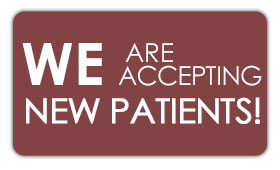by Jon Elson | May 11, 2015 | Chiropractic Health
The intervetebral disc’s main function is to transmit loads through the spine and provide flexibility to the spinal column. The intervertebral disc is similar to a jelly doughnut in composition. The inside is made up of a “jelly like material,” called the nucleus pulposus, and 20-30 fibrous ring layers. The rings, called the anulus fibrosis, keep the jelly inside. Herniations are a result of a complete tear through the fibrous rings (anulus fibrosis), due to repetitive bending, incorrect posture, a poor workout regime, prolonged flexion, weak muscles and trauma.
by Jon Elson | May 4, 2015 | Chiropractic Health
Do you experience pain while chewing, opening your mouth wide or yawning? Do you complain of pain or soreness in front of the ear, around the jaw muscles or temples? Do you have pain or soreness in your teeth? Does your jaw make noises loud enough to bother you or others? Does your jaw ever get stuck/locked when you open it? If you answered, “yes” to any of these questions, there is a chance that you have temporomandibular joint disorder (TMD). TMD is an umbrella term covering pain and dysfunction of the muscles that move the jaw and the temporomandibular joint (TMJ). Approximately 25% of the adult population is affected with TMD, to some degree. Typically, this ailment affects females more than males (4:1), especially in the 20 to 40 year old demographic.
by Jon Elson | Apr 27, 2015 | Chiropractic Health
A SPRAIN is any injury to a ligament, which is the fibrous tissue that joins the end of one bone with another. Ligaments stabilize and support the joints of the body. (The ACL supports the upper leg to the lower leg). In a sprain, one or more ligaments are stretched or torn. A STRAIN is classified as any injury to a muscle and/or tendon, which is the fibrous tissue that connects muscle to bone (The Achilles tendon attaches the calf muscle to the foot bone). In a strain, a muscle or tendon is stretched or torn. Strains and sprains are classified as Grade I, Grade II, or Grade III.
by Jon Elson | Apr 20, 2015 | Chiropractic Health
Headaches are grouped into “primary” and “secondary” causes. Ninety-five percent of headaches are primary headaches; such as tension, migraine, or cluster headaches. Primary headaches are not caused by a particular disease: the headache itself is the primary cause. Migraines typically present with pulsing head pain, nausea, photophobia (sensitivity to light) and phonophobia (sensitivity to sound). Tension-type headaches usually present with non-pulsing “bandlike” pressure on both sides of the head and are not accompanied by other symptoms. Cluster headaches are characterized by short episodes (15–180 minutes) of severe pain, usually around one eye, with autonomic symptoms (tearing, red eye, nasal congestion), which will usually occur at the same time every day.
by Jon Elson | Apr 13, 2015 | Chiropractic Health
Tennis elbow or lateral epicondylitis is a condition in which the outer part of the elbow becomes painful and tender often due to overuse and failed healing from repeating the same motion over and over. It often affects a specific muscle called the extensor carpi radialis brevis. This condition is common in golfers, tennis players, carpenters and other laborers who swing a hammer or tool with the forearm.

 I grew up in Dayton, Ohio and completed my chiropractic education at Logan College of Chiropractic in St. Louis Missouri. After graduating chiropractic school I moved to Nashville. I have practiced in Nashville for 10 years and Nolensville for over 7 years. I enjoy spending time with my family, dogs, golfing, kayaking, watching college sports and being an active member of the Nolensville community and serving its health needs.
I grew up in Dayton, Ohio and completed my chiropractic education at Logan College of Chiropractic in St. Louis Missouri. After graduating chiropractic school I moved to Nashville. I have practiced in Nashville for 10 years and Nolensville for over 7 years. I enjoy spending time with my family, dogs, golfing, kayaking, watching college sports and being an active member of the Nolensville community and serving its health needs.